Archive for July 2016
 New Trendy Layered Bob Hairstyle Pictures ~ Prom Hairstyleshttps://blogger.googleusercontent.com/img/b/R29vZ2xl/AVvXsEjEbn9ItRrTt6mZOEBKP2F_ldMNb9Ixdkz5dTtLkOPLU8RF7iaBheHog3Nnxv5i1slLdeVpMap0Jqte5cRMI6CNi2qDE5_aBMT_BVct0J57Kd2A8YN4k2dufrzZfHEW5Mk9-hOJjXhD/s1600/Layered-Bob-Hairstyles-New-Trend-2011-4.jpg
New Trendy Layered Bob Hairstyle Pictures ~ Prom Hairstyleshttps://blogger.googleusercontent.com/img/b/R29vZ2xl/AVvXsEjEbn9ItRrTt6mZOEBKP2F_ldMNb9Ixdkz5dTtLkOPLU8RF7iaBheHog3Nnxv5i1slLdeVpMap0Jqte5cRMI6CNi2qDE5_aBMT_BVct0J57Kd2A8YN4k2dufrzZfHEW5Mk9-hOJjXhD/s1600/Layered-Bob-Hairstyles-New-Trend-2011-4.jpgBob Hairstyles Haircuts
A hairstyle, hairdo, or haircut identifies the styling of mane, on the human scalp usually. Sometimes, this may also mean an editing of beard hair. The fashioning of hair can be considered an aspect of personal grooming, fashion, and cosmetics, although practical, cultural, and popular things to consider effect some hairstyles also. The oldest known depiction of hair braiding dates back about 30,000 years. In historical civilizations, women's head of hair was often elaborately and carefully dressed up in special ways. In Imperial Rome, women wore their wild hair in complicated styles. From the time of the Roman Empire[citation needed] until the Middle Ages, most women grew their mane as long as it could in a natural way increase. Through the Roman Empire as well as in the 16th century in the western world, women began to wear their hair in extremely ornate styles. Inside the later half of the 15th century and on into the 16th century an extremely high hairline on the forehead was considered attractive. During the 16th and 15th decades, Western european men used their mane cropped no than shoulder-length much longer. In the first 17th century male hairstyles grew longer, with waves or curls being considered desirable.
The male wig was pioneered by Ruler Louis XIII of France (1601-1643) in 1624. Periwigs or perukes for men were released into the English-speaking world with other French styles in 1660. Late 17th-century wigs were lengthy and wavy, but became shorter in the mid-18th century, where time these were normally white. Short hair for fashionable men was something of the Neoclassical movement. In the first 19th century the guy beard, and moustaches and sideburns also, made a strong reappearance. Through the 16th to the 19th hundred years, European women's hair became more obvious while their wild hair coverings grew smaller. In the middle of the 18th hundred years the pouf style developed. Through the First World War, women around the global world started to shift to shorter hairstyles that were much easier to manage. In the early 1950s women's hair was generally curled and worn in a number of styles and lengths. In the 1960s, many women started out to wear their mane in a nutshell modern cuts including the pixie cut, within the 1970s, wild hair tended to be longer and looser. In both the 1960s and 1970s many men and women wore their scalp very right and long. In the 1980s, women pulled back their hair with scrunchies. Through the 1980s, punk hairstyles were followed by some public people.
Throughout times, people have worn their mane in a multitude of styles, largely determined by the fashions of the culture they live in. Hairstyles are signifiers and markers of social class, age, marital status, racial identification, political beliefs, and attitudes about gender.
In many ethnicities, often for religious reasons, women's hair is protected while in public, and in a few, such as Haredi Judaism or Western Orthodox areas, women's hair is shaved or trim very short, and covered with wigs.Only because the end of World Conflict I have women started to wear their head of hair brief and in rather natural styles.
Paleolithic
- The oldest known duplication of locks braiding lies again about 30,000 years: the Venus of Willendorf, now known in academia as the Woman of Willendorf, of a female figurine from the Paleolithic, believed to obtain been made between about 28,000 and 25,000 BCE.The Venus of Brassempouy matters about 25,000 yrs . old and indisputably shows hairstyling.
Bronze Age
- In Bronze Age group razors were known and in use by some men, but not on a daily basis since the procedure was rather unpleasant and required resharpening of the tool which reduced its strength.
Ancient history
- In historical civilizations, women's scalp was often elaborately and carefully dressed up in special ways. Women coloured their scalp, curled it, and pinned it up (ponytail) in many ways. They set in place their hair in curls and waves using damp clay, which they dried in the sun and then combed out, or else by utilizing a jelly made of quince seeds soaked in normal water, or styling tongs and curling irons of various kinds.
Roman Empire and DARK AGES
- Between 27 BC and 102 Advertisement, in Imperial Rome, women wore their scalp in complicated styles: scores of curls on top, or in rows of waves, drawn back to ringlets or braids. Eventually noblewomen's hairstyles grew so complex that they required daily attention from several slaves and a stylist to become maintained. The wild hair was lightened using real wood ash, unslaked lime and sodium bicarbonate, or darkened with copper filings, oak-apples or leeches marinated in vinegar and wine beverages. It was augmented by wigs, hairpieces and pads, and held set up by nets, pins, pomade and combs. Under the Byzantine Empire, noblewomen covered most of their hair with silk caps and pearl nets.
Best HAIRSTYLES For Short Hair Women
- It is vital to find the best short hairstyles for girls since it takes on an enormous part of your style. Having the right hairstyle can provide you with happiness and positive feelings. Find out which hairstyle is exquisite for your personality and character. You should also check with your hairstylist before having a new haircut. After all, changes are excellent and it can add positive outlook in your daily life also. Feel free to browse our collection of short hairstyles for girls and select the one which your like best.
Bob Style Haircuts Easy Hairstyles For Short Hair
 https://blogger.googleusercontent.com/img/b/R29vZ2xl/AVvXsEj4LbVV8jFTp_EE0i3FePh7V84bZIlnEq8el55l6dykfGB-4cug6iZrgdl7CWYnt4Xhh15isaESnFQSD0vn_OyYj9b0pSNGsFqcI-Jrto3LwervI1SP5R6cWRKdsouZIR8BHjPJPPMbvXA/s1600/2011-bob-hairstyles.jpg
https://blogger.googleusercontent.com/img/b/R29vZ2xl/AVvXsEj4LbVV8jFTp_EE0i3FePh7V84bZIlnEq8el55l6dykfGB-4cug6iZrgdl7CWYnt4Xhh15isaESnFQSD0vn_OyYj9b0pSNGsFqcI-Jrto3LwervI1SP5R6cWRKdsouZIR8BHjPJPPMbvXA/s1600/2011-bob-hairstyles.jpgChic bob haircuts Love Hairstyle
 http://www.lhairstyle.com/wp-content/uploads/2012/08/Chic-bob-haircuts1.jpg
http://www.lhairstyle.com/wp-content/uploads/2012/08/Chic-bob-haircuts1.jpgAngled Bob Hairstyles Beautiful Hairstyles
 http://www.beautifulhairstyle.net/wp-content/uploads/2014/01/Hairstyles-Angled-Bob.jpg
http://www.beautifulhairstyle.net/wp-content/uploads/2014/01/Hairstyles-Angled-Bob.jpgBob Haircuts – Blogs Avenue
 http://www.blogsavenue.com/gallery/bob-haircuts/bob_haircut_1.jpg
http://www.blogsavenue.com/gallery/bob-haircuts/bob_haircut_1.jpgOIP.Me5b0236d39213b0eaf395ae816a8a7aao1
164CFFEA782EB94006DC86434E8EC0A7D54382BD8Dhttp://prom-hairstyles2013.blogspot.com/2011/07/new-trendy-layered-bob-hairstyle.html
Embed Our image to your website
ThumbnailImageEmbed Our image to a Forum
ThumbnailImage
New Trendy Layered Bob Hairstyle Pictures ~ Prom Hairstyles
 Lovely Short Hairstyles Hairstyles 2014 Short Hair Styles Longhttp://shortlonghairstyles.net/wp-content/uploads/2012/05/short-hairstyles-for-women-4.jpg
Lovely Short Hairstyles Hairstyles 2014 Short Hair Styles Longhttp://shortlonghairstyles.net/wp-content/uploads/2012/05/short-hairstyles-for-women-4.jpgLovely Short Hairstyles For Women
A hairstyle, hairdo, or haircut refers to the styling of hair, on the individuals head usually. Sometimes, this could also mean an editing of beard hair. The fashioning of hair can be considered an aspect of personal grooming, fashion, and cosmetics, although practical, cultural, and popular considerations also influence some hairstyles. The oldest known depiction of hair braiding dates back about 30,000 years. In traditional civilizations, women's head of hair was often elaborately and carefully dressed in special ways. In Imperial Rome, women used their hair in complicated styles. From enough time of the Roman Empire[citation needed] until the Middle Ages, nearly all women grew their scalp so long as it would obviously grow. During the Roman Empire as well as in the 16th century under western culture, women started out to wear their hair in ornate styles extremely. Inside the later half of the 15th century and on in to the 16th century an extremely high hairline on the forehead was considered attractive. During the 15th and 16th decades, Western men wore their locks cropped no than shoulder-length much longer. In the first 17th century male hairstyles grew longer, with curls or waves being considered advisable.
The male wig was pioneered by King Louis XIII of France (1601-1643) in 1624. Perukes or periwigs for men were created into the English-speaking world with other French styles in 1660. 17th-century wigs were very long and wavy late, but became shorter in the mid-18th century, where time these were normally white. Short hair for fashionable men was something of the Neoclassical movement. In the first 19th century the man beard, and also moustaches and sideburns, made a strong reappearance. From the 16th to the 19th century, European women's wild hair became more noticeable while their locks coverings grew smaller. In the center of the 18th hundred years the pouf style developed. During the First World Battle, women around the world started to shift to shorter hairstyles that were much easier to manage. In the early 1950s women's hair was generally curled and worn in a number of styles and lengths. In the 1960s, a lot of women commenced to wear their mane in a nutshell modern cuts like the pixie cut, within the 1970s, locks tended to be longer and looser. In both the 1960s and 1970s many men and women wore their hair lengthy and straight. Inside the 1980s, women pulled back their hair with scrunchies. During the 1980s, punk hairstyles were adopted by some people.
Throughout times, people have worn their head of hair in a multitude of styles, largely determined by the fashions of the culture they live in. Hairstyles are signifiers and markers of social class, age, marital status, racial identification, political beliefs, and attitudes about gender.
In many civilizations, often for religious reasons, women's scalp is protected while in public areas, and in a few, such as Haredi Judaism or European Orthodox neighborhoods, women's locks is shaved or lower very brief, and covered with wigs.Only since the end of World Warfare I've women begun to wear their wild hair short and in reasonably natural styles.
Paleolithic
- The oldest known reproduction of scalp braiding lies again about 30,000 years: the Venus of Willendorf, known in academia as the girl of Willendorf now, of a female figurine from the Paleolithic, believed to acquire been made between about 28,000 and 25,000 BCE.The Venus of Brassempouy matters about 25,000 yrs . old and indisputably shows hairstyling.
Bronze Age
- In Bronze Time razors were known and in use by some men, however, not on a daily basis since the method was rather upsetting and required resharpening of the tool which reduced its endurance.
Ancient history
- In historical civilizations, women's locks was often elaborately and carefully dressed in special ways. Women colored their wild hair, curled it, and pinned it up (ponytail) in many ways. They set their head of hair in curls and waves using damp clay, that they dried in sunlight and combed out then, or else by by using a jelly made of quince seeds soaked in water, or styling tongs and styling irons of various kinds.
Roman Empire and DARK AGES
- Between 27 BC and 102 Advertisement, in Imperial Rome, women used their mane in complicated styles: a mass of curls at the top, or in rows of waves, attracted back into ringlets or braids. Eventually noblewomen's hairstyles grew so complex that they required daily attention from several slaves and a stylist in order to be maintained. The hair was lightened using wood ash, unslaked lime and sodium bicarbonate, or darkened with copper filings, oak-apples or leeches marinated in vinegar and wines. It was augmented by wigs, hairpieces and pads, and held in place by nets, pins, combs and pomade. Beneath the Byzantine Empire, noblewomen covered most of their hair with silk pearl and caps nets.
Best Hair Styles For Short Hair Women
- It is very important to find the best short hair styles for females since it takes on an enormous part of your look. Having the right hairstyle can offer you with joy and positive emotions. Find out which hairstyle is ideal for your personality and character. You should also talk to your hairstylist before having a new haircut. After all, changes are excellent and it can add positive view in your life also. Feel free to browse our assortment of short hairstyles for females and select the one that your like best.
lovely short haircut for mature women short hairstyles gallery
 http://pics.haircutshairstyles.com/img/photos/full/2011-10/lovely_short_haircut_for_mature_women1163.jpg
http://pics.haircutshairstyles.com/img/photos/full/2011-10/lovely_short_haircut_for_mature_women1163.jpgnew trendy short haircuts for women 2013 short hairstyles 2014
 http://gvenny.com/images/beautiful-short-hairstyles-for-women/beautiful-short-hairstyles-for-women-16-4.jpg
http://gvenny.com/images/beautiful-short-hairstyles-for-women/beautiful-short-hairstyles-for-women-16-4.jpgShort Haircuts for Women Modern Magazin
 http://modernmagazin.com/wp-content/uploads/2015/03/short-haircuts-for-women-2015-1.jpg
http://modernmagazin.com/wp-content/uploads/2015/03/short-haircuts-for-women-2015-1.jpg25 Lovely Short Hair Styles For Women Over 50 CreativeFan
 http://0.tqn.com/d/beauty/1/0/l/5/1/martha_stewart.jpg
http://0.tqn.com/d/beauty/1/0/l/5/1/martha_stewart.jpgOIP.M02019ed6cef183768782fa7274c2e4fdo1
14210268F7ED57E6F829B4FDC74D719865E52A8E0Fhttp://shortlonghairstyles.net/short-haircuts/lovely-short-hairstyles/
Embed Our image to your website
ThumbnailImageEmbed Our image to a Forum
ThumbnailImage
Lovely Short Hairstyles Hairstyles 2014 Short Hair Styles Long
 Asymmetrical Bob Haircuts 2014 5http://thebestfashionblog.com/wp-content/uploads/2014/01/Asymmetrical-Bob-Haircuts-2014-5.jpg
Asymmetrical Bob Haircuts 2014 5http://thebestfashionblog.com/wp-content/uploads/2014/01/Asymmetrical-Bob-Haircuts-2014-5.jpgBob Hairstyles Haircuts
A hairstyle, hairdo, or haircut refers to the styling of wild hair, usually on the human head. Sometimes, this may indicate an editing of beard mane also. The fashioning of hair can be viewed as an element of personal grooming, fashion, and cosmetics, although practical, cultural, and popular concerns effect some hairstyles also. The oldest known depiction of hair braiding goes back about 30,000 years. In early civilizations, women's hair was often elaborately and carefully dressed up in special ways. In Imperial Rome, women used their head of hair in complicated styles. From the time of the Roman Empire[citation needed] until the Middle Ages, most women grew their head of hair so long as it could develop in a natural way. During the Roman Empire as well as in the 16th century in the western world, women commenced to wear their hair in ornate styles extremely. Within the later half of the 15th century and on in to the 16th century a very high hairline on the forehead was considered attractive. Through the 15th and 16th centuries, Western european men wore their wild hair cropped no than shoulder-length much longer. In the early 17th century male hairstyles grew longer, with waves or curls being considered desirable.
The male wig was pioneered by King Louis XIII of France (1601-1643) in 1624. Perukes or periwigs for men were launched into the English-speaking world with other French styles in 1660. Late 17th-century wigs were lengthy and wavy, but became shorter in the mid-18th century, by which time these were normally white. Short hair for fashionable men was something of the Neoclassical movement. In the first 19th century the male beard, and also moustaches and sideburns, made a strong reappearance. From the 16th to the 19th century, European women's scalp became more obvious while their hair coverings grew smaller. In the middle of the 18th century the pouf style developed. During the First World War, women around the global world started to shift to shorter hairstyles that were better to manage. In the first 1950s women's hair was generally curled and worn in a number of styles and lengths. In the 1960s, a lot of women started out to wear their locks in a nutshell modern cuts such as the pixie cut, while in the 1970s, scalp tended to be longer and looser. In both the 1960s and 1970s many men and women wore their hair lengthy and straight. Inside the 1980s, women pulled back their hair with scrunchies. During the 1980s, punk hairstyles were followed by some individuals.
Throughout times, folks have worn their wild hair in a wide variety of styles, largely determined by the fashions of the culture they live in. Hairstyles are markers and signifiers of social class, age, marital status, racial identification, political beliefs, and attitudes about gender.
In many civilizations, often for religious reasons, women's head of hair is protected while in public, and in a few, such as Haredi Judaism or European Orthodox communities, women's locks is shaved or cut very short, and protected with wigs.Only because the end of World Conflict I've women begun to wear their wild hair short and in fairly natural styles.
Paleolithic
- The oldest known reproduction of scalp braiding lies again about 30,000 years: the Venus of Willendorf, now known in academia as the girl of Willendorf, of a female figurine from the Paleolithic, estimated to obtain been made between about 28,000 and 25,000 BCE.The Venus of Brassempouy counts about 25,000 years old and shows hairstyling indisputably.
Bronze Age
- In Bronze Age group razors were known and used by some men, but not on a regular basis since the process was rather annoying and required resharpening of the tool which reduced its strength.
Ancient history
- In old civilizations, women's mane was often elaborately and carefully dressed in special ways. Women colored their wild hair, curled it, and pinned it up (ponytail) in a variety of ways. They arranged their mane in waves and curls using moist clay, that they dried in sunlight and then combed out, if not by by using a jelly made of quince seed products soaked in water, or styling tongs and styling irons of various kinds.
Roman Empire and Middle Ages
- Between 27 BC and 102 AD, in Imperial Rome, women used their mane in complicated styles: a mass of curls on top, or in rows of waves, drawn back into braids or ringlets. Eventually noblewomen's hairstyles grew so complex that they required daily attention from several slaves and a stylist to become maintained. The scalp was often lightened using timber ash, unslaked lime and sodium bicarbonate, or darkened with copper filings, oak-apples or leeches marinated in vinegar and wine beverages. It had been augmented by wigs, hairpieces and pads, and held set up by nets, pins, pomade and combs. Under the Byzantine Empire, noblewomen covered the majority of their hair with silk caps and pearl nets.
Best HAIRSTYLES For Short Hair Women
- It is vital to find the best short hair styles for girls since it takes on a huge part of your style. Getting the right hairstyle can provide you with delight and positive thoughts. Find out which hairstyle is ideal for your character and personality. You should also consult your hairstylist before having a new haircut. After all, changes are excellent and it can truly add positive view in your daily life also. Feel free to browse our collection of short hairstyles for girls and select the one that your like best.
bob hairstyles
 http://www.topfashionsites.net/news/gallery/bob-hairstyles/bob_hairstyles_2012_4.jpg
http://www.topfashionsites.net/news/gallery/bob-hairstyles/bob_hairstyles_2012_4.jpgMedium Length Bob Haircuts For SpringSummer 2014
 http://thebestfashionblog.com/wp-content/uploads/2014/01/Medium-Length-Bob-Haircuts-2014-5.jpg
http://thebestfashionblog.com/wp-content/uploads/2014/01/Medium-Length-Bob-Haircuts-2014-5.jpgshort layered bob hairstyles front and back view Hollywood Official
 http://www.hollywoodofficial.com/wp-content/uploads/2014/09/short-layered-bob-hairstyles-front-and-back-view-800x1024.jpg
http://www.hollywoodofficial.com/wp-content/uploads/2014/09/short-layered-bob-hairstyles-front-and-back-view-800x1024.jpgBob Haircuts Bob Hairstyles for Chin Length
 http://www.styles-new.com/images/1344182929_bob-hairstyles.jpg
http://www.styles-new.com/images/1344182929_bob-hairstyles.jpgOIP.M3b150e0ebf4b8a9e3d15fc0fe6df04ebH1
317455E74882DA413CC31601ACF56008C98181717Fhttp://thebestfashionblog.com/haircuts-hairstyles/asymmetrical-bob-haircuts-2014
Embed Our image to your website
ThumbnailImageEmbed Our image to a Forum
ThumbnailImage
Asymmetrical Bob Haircuts 2014 5
 Latest short hairstyles for women 2015http://gvenny.com/images/latest-short-hairstyles-for-women-2015/latest-short-hairstyles-for-women-2015-94.jpg
Latest short hairstyles for women 2015http://gvenny.com/images/latest-short-hairstyles-for-women-2015/latest-short-hairstyles-for-women-2015-94.jpgModern Short Hairstyles For Women
A hair, hairdo, or haircut identifies the styling of mane, on the individual head usually. Sometimes, this may indicate an editing of beard hair also. The fashioning of hair can be viewed as an aspect of personal grooming, fashion, and cosmetics, although practical, cultural, and popular things to consider influence some hair styles also. The oldest known depiction of hair braiding dates back about 30,000 years. In ancient civilizations, women's scalp was often elaborately and carefully dressed in special ways. In Imperial Rome, women wore their locks in complicated styles. From the time of the Roman Empire[citation needed] before Middle Ages, majority of the women grew their mane so long as it would in a natural way expand. Through the Roman Empire as well as in the 16th century under western culture, women commenced to wear their hair in extremely ornate styles. Within the later half of the 15th century and on in to the 16th century an extremely high hairline on the forehead was considered attractive. During the 15th and 16th generations, European men wore their wild hair cropped no longer than shoulder-length. In the early 17th century male hairstyles grew longer, with waves or curls being considered desirable.
The male wig was pioneered by Ruler Louis XIII of France (1601-1643) in 1624. Perukes or periwigs for men were presented into the English-speaking world with other French styles in 1660. Late 17th-century wigs were lengthy and wavy, but became shorter in the mid-18th century, by which time they were normally white. Short hair for fashionable men was something of the Neoclassical movement. In the first 19th century the guy beard, and moustaches and sideburns also, made a strong reappearance. From your 16th to the 19th century, European women's head of hair became more obvious while their scalp coverings grew smaller. In the middle of the 18th century the pouf style developed. Through the First World Warfare, women around the global world started to shift to shorter hairstyles that were simpler to manage. In the early 1950s women's hair was generally curled and worn in a variety of styles and lengths. In the 1960s, a lot of women commenced to wear their head of hair in short modern cuts such as the pixie cut, within the 1970s, wild hair tended to be much longer and looser. In both the 1960s and 1970s a lot of men and women wore their hair lengthy and straight. Inside the 1980s, women pulled back their hair with scrunchies. Through the 1980s, punk hairstyles were followed by some interpersonal people.
Throughout times, people have worn their locks in a multitude of styles, determined by the fashions of the culture they are in largely. Hairstyles are signifiers and markers of social class, age, marital status, racial identification, political beliefs, and attitudes about gender.
In many cultures, for religious reasons often, women's scalp is protected while in public, and in some, such as Haredi Judaism or Western european Orthodox neighborhoods, women's mane is shaved or lower very short, and covered with wigs.Only because the end of World War I have women begun to wear their locks brief and in pretty natural styles.
Paleolithic
- The oldest known duplication of scalp braiding lies back again about 30,000 years: the Venus of Willendorf, known in academia as the Woman of Willendorf now, of a lady figurine from the Paleolithic, approximated to get been made between about 28,000 and 25,000 BCE.The Venus of Brassempouy matters about 25,000 years old and indisputably shows hairstyling.
Bronze Age
- In Bronze Age razors were known and in use by some men, but not on a daily basis since the method was rather unpleasant and required resharpening of the tool which reduced its endurance.
Ancient history
- In early civilizations, women's scalp was often elaborately and carefully dressed in special ways. Women colored their scalp, curled it, and pinned it up (ponytail) in many ways. They set their wild hair in waves and curls using wet clay, that they dried out in the sun and then combed out, if not by using a jelly manufactured from quince seed products soaked in drinking water, or styling tongs and styling irons of various kinds.
Roman Empire and DARK AGES
- Between 27 BC and 102 Advertisement, in Imperial Rome, women wore their hair in complicated styles: a mass of curls at the top, or in rows of waves, drawn back into ringlets or braids. Eventually noblewomen's hairstyles grew so complex that they required daily attention from several slaves and a stylist to become maintained. The head of hair was often lightened using timber ash, unslaked lime and sodium bicarbonate, or darkened with copper filings, oak-apples or leeches marinated in vinegar and wine beverages. It was augmented by wigs, pads and hairpieces, and held in place by nets, pins, pomade and combs. Beneath the Byzantine Empire, noblewomen covered the majority of their hair with silk pearl and caps nets.
Best HAIRSTYLES For Short Hair Women
- It is vital to find the best short hairstyles for girls since it performs an enormous part of your style. Getting the right hairstyle provides you with pleasure and positive thoughts. Find out which hairstyle is simply perfect for your character and personality. You should also consult your hairstylist before having a new haircut. After all, changes are great and additionally, it may add positive outlook in your daily life. Feel absolve to browse our assortment of short hairstyles for females and choose the the one which your like best.
Short Haircuts for Women Modern Magazin
 http://modernmagazin.com/wp-content/uploads/2015/03/short-haircuts-for-women-2015-1.jpg
http://modernmagazin.com/wp-content/uploads/2015/03/short-haircuts-for-women-2015-1.jpgWomen Short Hairstyles 2015 2016 Most Popular Short Hairstyles
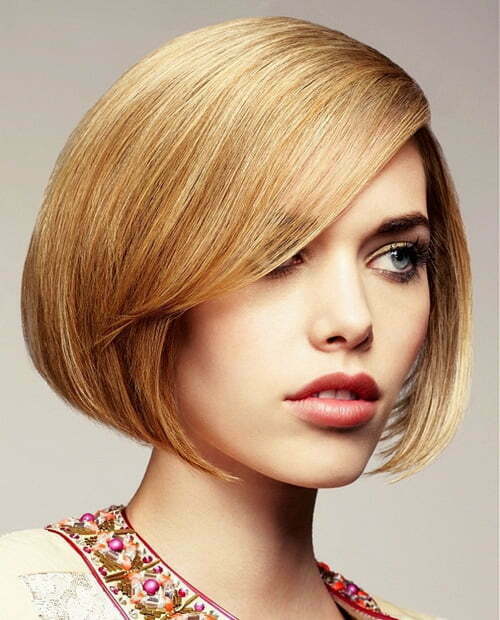 http://www.short-haircut.com/wp-content/uploads/2013/02/Modern-short-straight-haircuts.jpg
http://www.short-haircut.com/wp-content/uploads/2013/02/Modern-short-straight-haircuts.jpgModern Short Hairstyles For Women
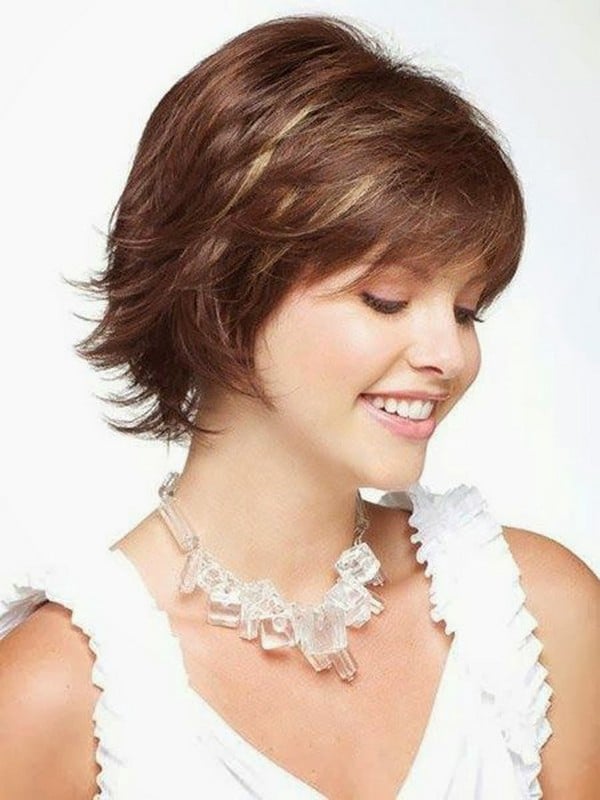 http://beautifieddesigns.com/wp-content/uploads/2015/12/modern-short-hairstyles-for-women.jpg
http://beautifieddesigns.com/wp-content/uploads/2015/12/modern-short-hairstyles-for-women.jpgModern Very Short Haircuts For Women BenHairStyle.com
 http://benhairstyle.com/wp-content/uploads/2015/01/modern_very_short_haircuts_for_women.jpg
http://benhairstyle.com/wp-content/uploads/2015/01/modern_very_short_haircuts_for_women.jpgOIP.M0796e83c1a1c132c957ab624f61e4491o0
49502219E983A9A89D9ED344899637D0E110D0C1D1http://gvenny.com/latest-short-hairstyles-for-women-2015/
Embed Our image to your website
ThumbnailImageEmbed Our image to a Forum
ThumbnailImage
Latest short hairstyles for women 2015
 Beautiful Short Asian Hairstyles for Women New Hairstyles, Haircutshttp://www.hairstyleshelp.com/wp-content/uploads/2013/11/Beautiful-Short-Asian-Hairstyles-for-Women.jpg
Beautiful Short Asian Hairstyles for Women New Hairstyles, Haircutshttp://www.hairstyleshelp.com/wp-content/uploads/2013/11/Beautiful-Short-Asian-Hairstyles-for-Women.jpgLovely Short Hairstyles For Women
A hairstyle, hairdo, or haircut refers to the styling of scalp, on the individuals head usually. Sometimes, this may indicate an editing and enhancing of beard locks also. The fashioning of hair can be viewed as an aspect of personal grooming, fashion, and cosmetics, although practical, cultural, and popular considerations also influence some hairstyles. The oldest known depiction of hair braiding goes back about 30,000 years. In historical civilizations, women's mane was often elaborately and carefully dressed in special ways. In Imperial Rome, women wore their locks in complicated styles. From enough time of the Roman Empire[citation needed] until the Middle Ages, most women grew their hair as long as it could increase naturally. During the Roman Empire as well as in the 16th century under western culture, women commenced to wear their hair in ornate styles extremely. In the later half of the 15th century and on into the 16th century an extremely high hairline on the forehead was considered attractive. Through the 15th and 16th ages, Western men wore their wild hair cropped no than shoulder-length longer. In the early 17th century male hairstyles grew longer, with waves or curls being considered desirable.
The male wig was pioneered by King Louis XIII of France (1601-1643) in 1624. Periwigs or perukes for men were unveiled in to the English-speaking world with other French styles in 1660. 17th-century wigs were lengthy and wavy late, but became shorter in the mid-18th century, by which time these were normally white. Short hair for fashionable men was something of the Neoclassical movement. In the first 19th hundred years the guy beard, and also moustaches and sideburns, made a strong reappearance. Through the 16th to the 19th century, European women's scalp became more noticeable while their head of hair coverings grew smaller. In the middle of the 18th hundred years the pouf style developed. During the First World War, women around the global world started to shift to shorter hairstyles that were simpler to manage. In the first 1950s women's hair was generally curled and worn in a number of styles and lengths. In the 1960s, many women commenced to wear their head of hair in short modern cuts such as the pixie cut, within the 1970s, hair tended to be longer and looser. In both 1960s and 1970s many men and women wore their hair lengthy and straight. Inside the 1980s, women pulled back their hair with scrunchies. Through the 1980s, punk hair styles were implemented by some individuals.
Throughout times, people have worn their mane in a multitude of styles, determined by the fashions of the culture they reside in largely. Hairstyles are markers and signifiers of social class, age, marital status, racial identification, political beliefs, and attitudes about gender.
In many civilizations, often for religious reasons, women's mane is protected while in public areas, and in some, such as Haredi Judaism or European Orthodox areas, women's hair is shaved or slice very short, and protected with wigs.Only since the end of World Battle I have women started to wear their locks short and in quite natural styles.
Paleolithic
- The oldest known reproduction of locks braiding lies back again about 30,000 years: the Venus of Willendorf, now known in academia as the girl of Willendorf, of a female figurine from the Paleolithic, believed to have been made between about 28,000 and 25,000 BCE.The Venus of Brassempouy matters about 25,000 yrs . old and indisputably shows hairstyling.
Bronze Age
- In Bronze Era razors were known and used by some men, but not on a regular basis since the process was rather upsetting and required resharpening of the tool which reduced its stamina.
Ancient history
- In early civilizations, women's head of hair was often elaborately and carefully dressed in special ways. Women colored their head of hair, curled it, and pinned it up (ponytail) in many ways. They placed their locks in waves and curls using damp clay, which they dried in the sun and then combed out, or else by using a jelly manufactured from quince seeds soaked in drinking water, or curling tongs and curling irons of varied kinds.
Roman Empire and Middle Ages
- Between 27 BC and 102 Advertising, in Imperial Rome, women wore their scalp in complicated styles: scores of curls on top, or in rows of waves, drawn back to ringlets or braids. Eventually noblewomen's hairstyles grew so complex that they required daily attention from several slaves and a stylist to become maintained. The head of hair was lightened using hardwood ash, unslaked lime and sodium bicarbonate, or darkened with copper filings, oak-apples or leeches marinated in vinegar and wine beverages. It had been augmented by wigs, pads and hairpieces, and held set up by nets, pins, pomade and combs. Under the Byzantine Empire, noblewomen covered the majority of their hair with silk pearl and caps nets.
Best Hair Styles For Short Hair Women
- It is very important to find the best short hairstyles for females since it takes on a huge part of your style. Having the right hairstyle can offer you with pleasure and positive emotions. Find out which hairstyle is simply perfect for your personality and character. You should also check with your hairstylist before having a new haircut. After all, changes are excellent and additionally, it may add positive outlook in your daily life. Feel free to browse our assortment of short hairstyles for females and select the the one which your like best.
Beautiful Short Hairstyles for Women Curly Hair
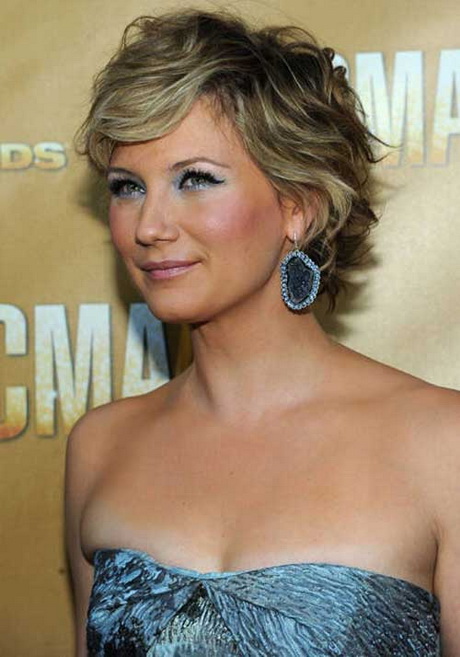 http://gvenny.com/images/beautiful-short-hairstyles-for-women/beautiful-short-hairstyles-for-women-16-17.jpg
http://gvenny.com/images/beautiful-short-hairstyles-for-women/beautiful-short-hairstyles-for-women-16-17.jpgBeautiful Short Hairstyles for Black Women Short Hairstyles 2015
 http://www.short-haircut.com/wp-content/uploads/2013/04/Short-straight-hairs-for-black-women.jpg
http://www.short-haircut.com/wp-content/uploads/2013/04/Short-straight-hairs-for-black-women.jpgBeautiful Short Hairstyles for Black Women Short Hairstyles 2015
 http://www.hairstyleshelp.com/wp-content/uploads/2013/11/Beautiful-Short-Haircuts-for-Older-Women.jpg
http://www.hairstyleshelp.com/wp-content/uploads/2013/11/Beautiful-Short-Haircuts-for-Older-Women.jpgfor women with thick hair 21 beautiful short hairstyles for women with
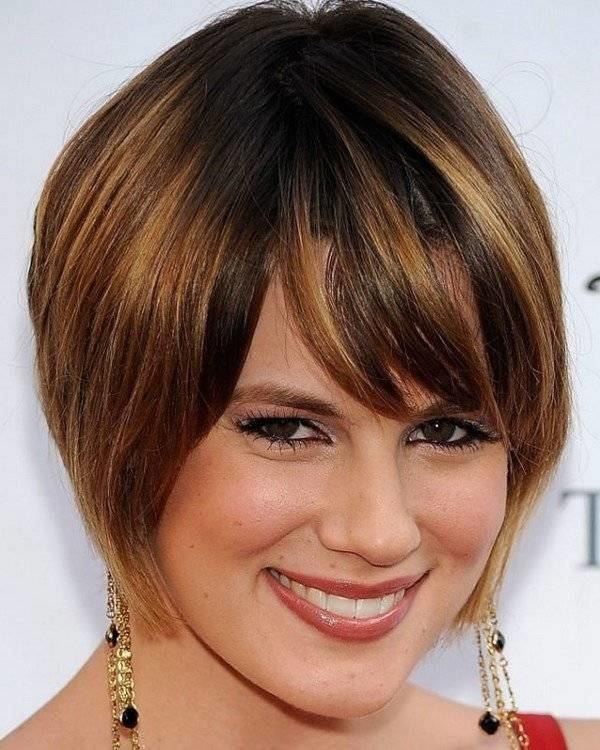 http://beautifieddesigns.com/wp-content/uploads/2015/12/beautiful-short-hairstyles-for-women-with-thick-hair.jpg
http://beautifieddesigns.com/wp-content/uploads/2015/12/beautiful-short-hairstyles-for-women-with-thick-hair.jpgOIP.M63543d2372776180b71cd31f74d4317bo1
431DF73170894D58FEEB26C83328B7C2109BA72174http://www.hairstyleshelp.com/best-short-asian-hairstyles-for-women/beautiful-short-asian-hairstyles-for-women/
Embed Our image to your website
ThumbnailImageEmbed Our image to a Forum
ThumbnailImage
Beautiful Short Asian Hairstyles for Women New Hairstyles, Haircuts
 20142015 Bob Haircuts with Bangs WardrobeLooks.comhttp://wardrobelooks.com/wp-content/uploads/2014/04/2014-2015-Bob-Haircuts-with-Bangs-8.jpg
20142015 Bob Haircuts with Bangs WardrobeLooks.comhttp://wardrobelooks.com/wp-content/uploads/2014/04/2014-2015-Bob-Haircuts-with-Bangs-8.jpgBob Hairstyles Haircuts
A hair, hairdo, or haircut refers to the styling of locks, on the human head usually. Sometimes, this may suggest an editing of beard wild hair also. The fashioning of hair can be considered an element of personal grooming, fashion, and cosmetics, although practical, cultural, and popular considerations also influence some hairstyles. The oldest known depiction of hair braiding goes back about 30,000 years. In early civilizations, women's scalp was often elaborately and carefully dressed up in special ways. In Imperial Rome, women wore their scalp in complicated styles. From the time of the Roman Empire[citation needed] until the Middle Ages, the majority of females grew their wild hair as long as it could increase by natural means. Through the Roman Empire as well as in the 16th century in the western world, women started to wear their hair in ornate styles extremely. Within the later half of the 15th century and on into the 16th century an extremely high hairline on the forehead was considered attractive. Through the 15th and 16th generations, Western european men wore their head of hair cropped no than shoulder-length longer. In the early 17th century male hairstyles grew longer, with waves or curls being considered desirable.
The male wig was pioneered by King Louis XIII of France (1601-1643) in 1624. Perukes or periwigs for men were created in to the English-speaking world with other French styles in 1660. 17th-century wigs were very long and wavy late, but became shorter in the mid-18th century, where time they were normally white. Short hair for fashionable men was something of the Neoclassical movement. In the first 19th century the man beard, and moustaches and sideburns also, made a strong reappearance. In the 16th to the 19th hundred years, European women's wild hair became more visible while their scalp coverings grew smaller. In the center of the 18th century the pouf style developed. Through the First World Conflict, women around the global world started to shift to shorter hairstyles that were better to manage. In the early 1950s women's hair was generally curled and worn in a variety of styles and lengths. In the 1960s, a lot of women commenced to wear their head of hair in a nutshell modern cuts including the pixie cut, within the 1970s, hair tended to be longer and looser. In both 1960s and 1970s many men and women wore their hair lengthy and straight. In the 1980s, women pulled back their hair with scrunchies. Through the 1980s, punk hairstyles were used by some people.
Throughout times, people have worn their hair in a wide variety of styles, largely determined by the fashions of the culture they live in. Hairstyles are markers and signifiers of social class, age, marital status, racial identification, political beliefs, and attitudes about gender.
In many civilizations, for religious reasons often, women's wild hair is covered while in public, and in some, such as Haredi Judaism or Western Orthodox areas, women's wild hair is shaved or minimize very short, and covered with wigs.Only since the end of World Battle I've women begun to wear their wild hair short and in quite natural styles.
Paleolithic
- The oldest known duplication of mane braiding lies back about 30,000 years: the Venus of Willendorf, known in academia as the girl of Willendorf now, of a female figurine from the Paleolithic, estimated to get been made between about 28,000 and 25,000 BCE.The Venus of Brassempouy counts about 25,000 yrs . old and shows hairstyling indisputably.
Bronze Age
- In Bronze Age group razors were known and used by some men, however, not on a regular basis since the method was rather distressing and required resharpening of the tool which reduced its strength.
Ancient history
- In traditional civilizations, women's locks was often elaborately and carefully dressed up in special ways. Women colored their wild hair, curled it, and pinned it up (ponytail) in many ways. They collection their mane in curls and waves using wet clay, which they dried out in the sun and then combed out, or else by by using a jelly manufactured from quince seeds soaked in drinking water, or curling tongs and curling irons of varied kinds.
Roman Empire and DARK AGES
- Between 27 BC and 102 Advertisement, in Imperial Rome, women wore their hair in complicated styles: a mass of curls on top, or in rows of waves, drawn back to ringlets or braids. Eventually noblewomen's hairstyles grew so complex that they required daily attention from several slaves and a stylist to become maintained. The mane was lightened using solid wood ash, unslaked lime and sodium bicarbonate, or darkened with copper filings, oak-apples or leeches marinated in vinegar and wine. It was augmented by wigs, hairpieces and pads, and held set up by nets, pins, combs and pomade. Under the Byzantine Empire, noblewomen covered most of their hair with silk caps and pearl nets.
Best Hair Styles For Short Hair Women
- It is vital to find the best short hairstyles for females since it takes on a huge part of your style. Getting the right hairstyle provides you with joy and positive emotions. Find out which hairstyle is simply perfect for your personality and character. You should also talk to your hairstylist before having a new haircut. After all, changes are great and additionally, it may add positive outlook in your daily life. Feel absolve to browse our assortment of short hairstyles for ladies and select the one which your like best.
short layered bob hairstyles front and back view Hollywood Official
 http://www.hollywoodofficial.com/wp-content/uploads/2014/09/short-layered-bob-hairstyles-front-and-back-view-800x1024.jpg
http://www.hollywoodofficial.com/wp-content/uploads/2014/09/short-layered-bob-hairstyles-front-and-back-view-800x1024.jpgmost popular hairstyle for 2013 is the bob hairstyle. Bob hairstyle
 http://www.hairstyleaa.com/wp-content/uploads/2012/07/Women-chic-bob-hairstyles5.jpg
http://www.hairstyleaa.com/wp-content/uploads/2012/07/Women-chic-bob-hairstyles5.jpgMedium Length Bob Haircuts For SpringSummer 2014
 http://thebestfashionblog.com/wp-content/uploads/2014/01/Medium-Length-Bob-Haircuts-2014-5.jpg
http://thebestfashionblog.com/wp-content/uploads/2014/01/Medium-Length-Bob-Haircuts-2014-5.jpg22 Popular Bob Haircuts for Short Hair Pretty Designs
 http://www.prettydesigns.com/wp-content/uploads/2015/06/Inverted-Bob-Hairstyle-for-Women.jpg
http://www.prettydesigns.com/wp-content/uploads/2015/06/Inverted-Bob-Hairstyle-for-Women.jpgOIP.M7c015925e3c728a97df3c6694f7300faH1
3559F5C4B252B53815706A0F72ED7F93B9CFB228EFhttp://wardrobelooks.com/2014-2015-bob-haircuts-with-bangs/
Embed Our image to your website
ThumbnailImageEmbed Our image to a Forum
ThumbnailImage
20142015 Bob Haircuts with Bangs WardrobeLooks.com
 blunt bob hairstyle for women 80 Very Best Quick Hairstyles For 2015http://gvenny.com/images/new-short-haircuts-for-2015/new-short-haircuts-for-2015-17-7.jpg
blunt bob hairstyle for women 80 Very Best Quick Hairstyles For 2015http://gvenny.com/images/new-short-haircuts-for-2015/new-short-haircuts-for-2015-17-7.jpgLatest Short Hairstyles For Women
A hair, hairdo, or haircut identifies the styling of locks, usually on the human being head. Sometimes, this may also mean an editing of beard hair. The fashioning of hair can be viewed as an element of personal grooming, fashion, and cosmetics, although practical, cultural, and popular things to consider influence some hair styles also. The oldest known depiction of hair braiding dates back about 30,000 years. In old civilizations, women's locks was often elaborately and carefully dressed up in special ways. In Imperial Rome, women wore their locks in complicated styles. From enough time of the Roman Empire[citation needed] before Middle Ages, majority of the women grew their mane so long as it would effortlessly develop. During the Roman Empire as well as in the 16th century under western culture, women started out to wear their hair in extremely ornate styles. In the later half of the 15th century and on into the 16th century an extremely high hairline on the forehead was considered attractive. Through the 15th and 16th hundreds of years, Western men used their mane cropped no than shoulder-length longer. In the early 17th century male hairstyles grew longer, with waves or curls being considered desirable.
The male wig was pioneered by King Louis XIII of France (1601-1643) in 1624. Perukes or periwigs for men were released in to the English-speaking world with other French styles in 1660. Late 17th-century wigs were lengthy and wavy, but became shorter in the mid-18th century, where time they were white normally. Short hair for fashionable men was a product of the Neoclassical movement. In the early 19th hundred years the guy beard, and moustaches and sideburns also, made a solid reappearance. From the 16th to the 19th century, European women's hair became more noticeable while their hair coverings grew smaller. In the middle of the 18th century the pouf style developed. During the First World Battle, women around the global world started to shift to shorter hairstyles that were simpler to manage. In the early 1950s women's hair was generally curled and worn in a number of styles and lengths. In the 1960s, a lot of women started out to wear their head of hair in short modern cuts including the pixie cut, while in the 1970s, wild hair tended to be much longer and looser. In both the 1960s and 1970s many men and women wore their hair very long and straight. Inside the 1980s, women pulled back their hair with scrunchies. Through the 1980s, punk hairstyles were implemented by some individuals.
Throughout times, people have worn their scalp in a multitude of styles, determined by the fashions of the culture they reside in largely. Hairstyles are signifiers and markers of social class, age, marital status, racial identification, political beliefs, and attitudes about gender.
In many cultures, often for religious reasons, women's wild hair is protected while in public, and in some, such as Haredi Judaism or Western european Orthodox neighborhoods, women's wild hair is shaved or cut very short, and covered with wigs.Only because the end of World War I have women started to wear their hair short and in pretty natural styles.
Paleolithic
- The oldest known duplication of locks braiding lies back about 30,000 years: the Venus of Willendorf, known in academia as the Woman of Willendorf now, of a female figurine from the Paleolithic, estimated to obtain been made between about 28,000 and 25,000 BCE.The Venus of Brassempouy counts about 25,000 years of age and shows hairstyling indisputably.
Bronze Age
- In Bronze Years razors were known and used by some men, however, not on a regular basis since the technique was rather unpleasant and required resharpening of the tool which reduced its endurance.
Ancient history
- In historic civilizations, women's locks was often elaborately and carefully dressed up in special ways. Women coloured their scalp, curled it, and pinned it up (ponytail) in a variety of ways. They set in place their locks in curls and waves using wet clay, which they dried out in sunlight and combed out then, if not by utilizing a jelly manufactured from quince seed products soaked in drinking water, or styling tongs and styling irons of varied kinds.
Roman Empire and DARK AGES
- Between 27 BC and 102 Advertisement, in Imperial Rome, women used their wild hair in complicated styles: a mass of curls on top, or in rows of waves, drawn back to braids or ringlets. Eventually noblewomen's hairstyles grew so complex that they required daily attention from several slaves and a stylist in order to be maintained. The scalp was often lightened using hardwood ash, unslaked lime and sodium bicarbonate, or darkened with copper filings, oak-apples or leeches marinated in vinegar and wine. It had been augmented by wigs, hairpieces and pads, and held set up by nets, pins, pomade and combs. Beneath the Byzantine Empire, noblewomen covered most of their hair with silk caps and pearl nets.
Best Hair Styles For Short Hair Women
- It is vital to choose the best short hairstyles for women since it plays a huge part of your look. Getting the right hairstyle can offer you with happiness and positive emotions. Find out which hairstyle is exquisite for your personality and character. You should consult your hairstylist before having a new haircut also. After all, changes are excellent and it can add positive perspective in your daily life also. Feel free to browse our collection of short hairstyles for ladies and select the one that your like best.
Short Bob Haircut for Women – Short Hairstyles for 2014: Cute Short
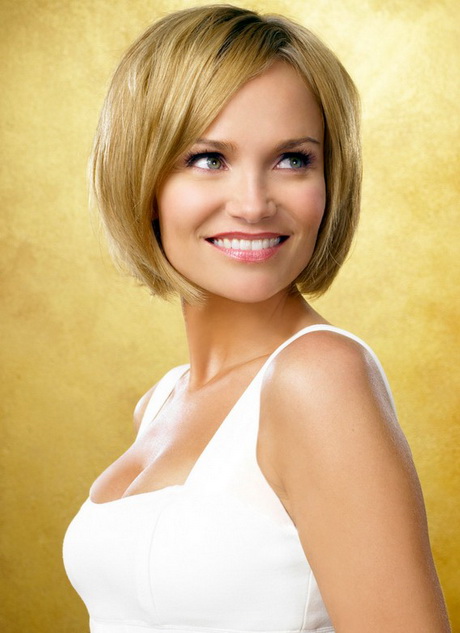 http://gvenny.com/images/latest-short-hairstyle-for-women-2014/latest-short-hairstyle-for-women-2014-02.jpg
http://gvenny.com/images/latest-short-hairstyle-for-women-2014/latest-short-hairstyle-for-women-2014-02.jpgShort Hairstyles: Latest Short Spikey Hairstyles For Women 2015, Short
 http://hairstyleholic.com/wp-content/uploads/2014/11/Latest-Short-Spikey-Hairstyles-For-Women-2015.jpg
http://hairstyleholic.com/wp-content/uploads/2014/11/Latest-Short-Spikey-Hairstyles-For-Women-2015.jpgcool summer haircuts for guys – Trendy Summer Hairstyles for Short .
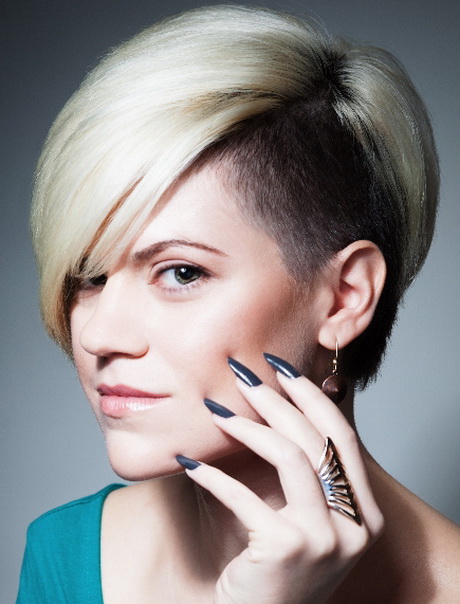 http://gvenny.com/images/latest-short-haircuts-for-women-2015/latest-short-haircuts-for-women-2015-30-4.jpg
http://gvenny.com/images/latest-short-haircuts-for-women-2015/latest-short-haircuts-for-women-2015-30-4.jpg30 Best Short Hairstyles for Round Faces Women Hairstyles 2015 Men
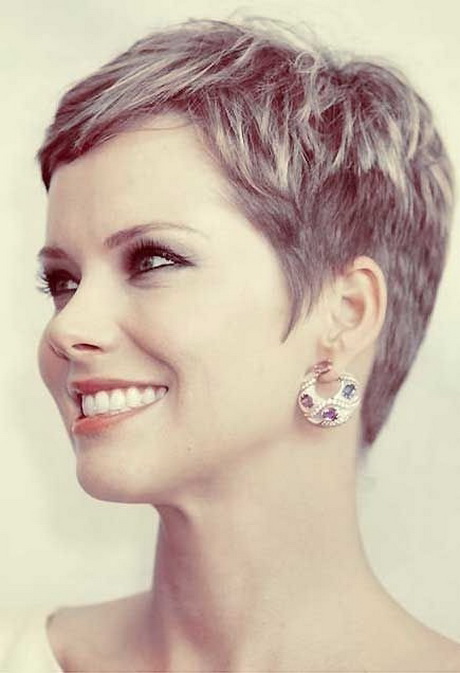 http://gvenny.com/images/latest-short-hairstyle-for-women-2015/latest-short-hairstyle-for-women-2015-41.jpg
http://gvenny.com/images/latest-short-hairstyle-for-women-2015/latest-short-hairstyle-for-women-2015-41.jpgOIP.M83a1bbbd1606e9a798c8f70ae67ff800o1
4145950FAFEA4F75A6D0DE2E369153B91E365FD38Bhttp://gvenny.com/new-short-haircuts-for-2015/
Embed Our image to your website
ThumbnailImageEmbed Our image to a Forum
ThumbnailImage
blunt bob hairstyle for women 80 Very Best Quick Hairstyles For 2015
 New Summer Short Hairstyles amp; Haircut Trends for Women 20152016http://www.stylesgap.com/wp-content/uploads/2015/05/Latest-Summer-Short-Hairstyles-for-women-2015-2016-11.jpg
New Summer Short Hairstyles amp; Haircut Trends for Women 20152016http://www.stylesgap.com/wp-content/uploads/2015/05/Latest-Summer-Short-Hairstyles-for-women-2015-2016-11.jpgLatest Short Hairstyles For Women
A hair, hairdo, or haircut refers to the styling of scalp, on the individuals head usually. Sometimes, this could indicate an editing and enhancing of beard mane also. The fashioning of hair can be considered an element of personal grooming, fashion, and cosmetics, although practical, cultural, and popular considerations also influence some hairstyles. The oldest known depiction of hair braiding goes back about 30,000 years. In old civilizations, women's locks was often elaborately and carefully dressed in special ways. In Imperial Rome, women wore their locks in complicated styles. From enough time of the Roman Empire[citation needed] until the Middle Ages, many women grew their scalp so long as it would develop by natural means. During the Roman Empire as well as in the 16th century in the western world, women started out to wear their hair in ornate styles extremely. Within the later half of the 15th century and on into the 16th century an extremely high hairline on the forehead was considered attractive. Through the 15th and 16th decades, Western european men used their hair cropped no more than shoulder-length. In the early 17th century male hairstyles grew longer, with waves or curls being considered desirable.
The male wig was pioneered by King Louis XIII of France (1601-1643) in 1624. Perukes or periwigs for men were presented in to the English-speaking world with other French styles in 1660. Late 17th-century wigs were lengthy and wavy, but became shorter in the mid-18th century, where time these were normally white. Short hair for fashionable men was something of the Neoclassical movement. In the first 19th century the male beard, and also moustaches and sideburns, made a strong reappearance. From the 16th to the 19th hundred years, European women's locks became more obvious while their scalp coverings grew smaller. In the center of the 18th hundred years the pouf style developed. Through the First World War, women around the world started to shift to shorter hairstyles that were easier to manage. In the first 1950s women's hair was generally curled and worn in a number of styles and lengths. In the 1960s, a lot of women began to wear their hair in a nutshell modern cuts such as the pixie cut, while in the 1970s, mane tended to looser be longer and. In both 1960s and 1970s a lot of men and women wore their mane very right and long. Inside the 1980s, women pulled back their hair with scrunchies. Through the 1980s, punk hair styles were followed by some public people.
Throughout times, people have worn their mane in a multitude of styles, determined by the fashions of the culture they are in largely. Hairstyles are markers and signifiers of social class, age, marital status, racial identification, political beliefs, and attitudes about gender.
In many civilizations, often for religious reasons, women's hair is covered while in public, and in some, such as Haredi Judaism or Western Orthodox neighborhoods, women's locks is shaved or minimize very brief, and covered with wigs.Only because the end of World Conflict I've women started to wear their hair brief and in reasonably natural styles.
Paleolithic
- The oldest known duplication of head of hair braiding lies back about 30,000 years: the Venus of Willendorf, now known in academia as the girl of Willendorf, of a female figurine from the Paleolithic, believed to acquire been made between about 28,000 and 25,000 BCE.The Venus of Brassempouy counts about 25,000 years of age and shows hairstyling indisputably.
Bronze Age
- In Bronze Age razors were known and used by some men, but not on a daily basis since the treatment was rather unpleasant and required resharpening of the tool which reduced its stamina.
Ancient history
- In ancient civilizations, women's hair was often elaborately and carefully dressed in special ways. Women colored their wild hair, curled it, and pinned it up (ponytail) in a variety of ways. They set in place their head of hair in curls and waves using damp clay, that they dried in sunlight and combed out then, or else by by using a jelly manufactured from quince seeds soaked in water, or curling tongs and styling irons of various kinds.
Roman Empire and DARK AGES
- Between 27 BC and 102 Advertisement, in Imperial Rome, women wore their hair in complicated styles: scores of curls on top, or in rows of waves, attracted back into ringlets or braids. Eventually noblewomen's hairstyles grew so complex that they required daily attention from several slaves and a stylist to become maintained. The hair was lightened using wood ash, unslaked lime and sodium bicarbonate, or darkened with copper filings, oak-apples or leeches marinated in wines and vinegar. It had been augmented by wigs, pads and hairpieces, and held in place by nets, pins, combs and pomade. Under the Byzantine Empire, noblewomen covered most of their hair with silk caps and pearl nets.
Best Hair Styles For Short Hair Women
- It is very important to choose the best short hair styles for ladies since it takes on an enormous part of your style. Getting the right hairstyle can provide you with enjoyment and positive feelings. Find out which hairstyle is perfect for your personality and character. You should consult your hairstylist before having a new haircut also. After all, changes are great and it can truly add positive view in your life also. Feel free to browse our collection of short hairstyles for women and choose the one which your like best.
110 Short Hairstyles for Women of all Ages in 2017 Beautified
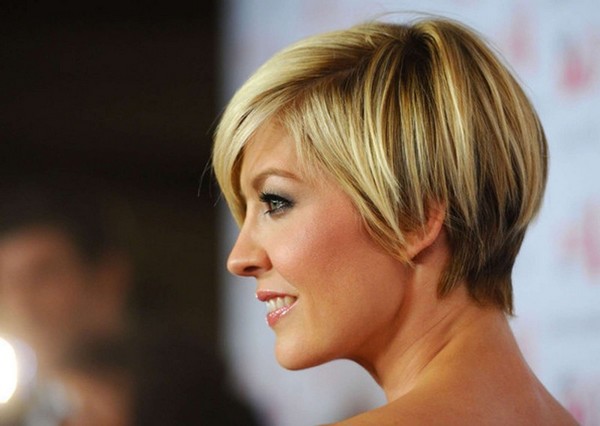 http://beautifieddesigns.com/wp-content/uploads/2015/12/hottest-short-hairstyles-women.jpg
http://beautifieddesigns.com/wp-content/uploads/2015/12/hottest-short-hairstyles-women.jpgshort bob haircuts 2015 womenNew Trendy Short Haircuts for Women 2015
 http://hairstylesforwomenvip.net/wp-content/uploads/2013/12/short-bob-haircuts-2013-womennew-trendy-short-haircuts-for-women-2013-short-hairstyles-2013-ukjmrp5q.jpg
http://hairstylesforwomenvip.net/wp-content/uploads/2013/12/short-bob-haircuts-2013-womennew-trendy-short-haircuts-for-women-2013-short-hairstyles-2013-ukjmrp5q.jpg20 Layered Short Hairstyles for Women Styles Weekly
 http://stylesweekly.com/wp-content/uploads/2014/10/Cute-Everyday-Hairstyles-for-Short-Hair-Chris-McMillan-Pixie-Cut.jpg
http://stylesweekly.com/wp-content/uploads/2014/10/Cute-Everyday-Hairstyles-for-Short-Hair-Chris-McMillan-Pixie-Cut.jpg25+ Latest Short Hair Cuts For Older Women Hairstyles
 http://www.short-hairstyles.co/wp-content/uploads/2017/04/18.Short-Hair-Cut-for-Older-Women.jpg
http://www.short-hairstyles.co/wp-content/uploads/2017/04/18.Short-Hair-Cut-for-Older-Women.jpgOIP.Mcf02a199b59bd874f6471da594fad79bo1
4791DAC3907BBDD3A2341AF62578CAF91A50F5423http://www.stylesgap.com/latest-summer-short-hairstyles-haircut-trends-for-women/
Embed Our image to your website
ThumbnailImageEmbed Our image to a Forum
ThumbnailImage
.jpg)
.jpg)

